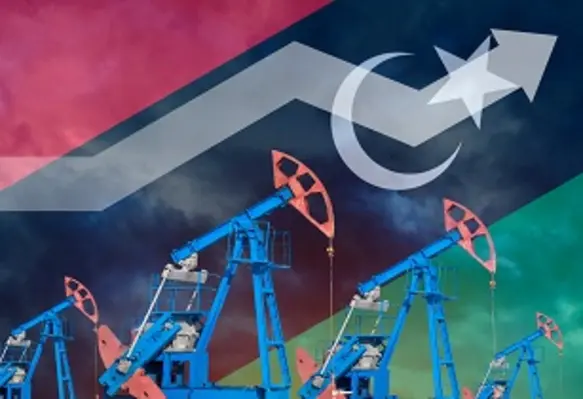Moin Siddiqi, economist, examines whether Libya can regain its status as a prominent oil producer and exporter
Libya, a vast country comparable in size to Mexico, is an ‘underexplored’ region that holds significant potential for oil and gas discoveries. Despite its size, only a quarter of its land has been explored for hydrocarbons. The International Energy Agency (IEA) suggests that a fully explored Libya could yield an additional 100bn barrels of oil equivalent. This potential has attracted the interest of foreign energy companies, contingent upon a stable political and security environment.
Current estimates of Libya's proven oil and natural gas reserves stand at 48.4bn barrels and 53 trillion cubic feet (Tcf) respectively, according to the Libyan National Oil Corp (NOC) and international oil companies (IOCs). However, these figures are considered outdated, and substantial upgrades are anticipated. The NOC envisions "ultimate recoverable reserves" of 144bn barrels of oil and 100 Tcf of natural gas, facilitated by advanced technologies from IOCs.
Libya encompasses six sedimentary basins, four of which have established petroleum systems. The Sirte and Murzuq basins are particularly promising, with the former housing the substantial Sarir field with 8bn barrels of recoverable reserves. The largely untapped Kufra basin near the Chadian and Sudanese borders could potentially contain 4bn barrels of oil. Additionally, offshore basins like Cyrenaica and Pelagian hold considerable potential, with the northern part of the Gulf of Gabes potentially containing 3.7bn barrels and 12 Tcf of natural gas.
Libya's appeal to IOCs lies in its superior reserves of high API gravity and low-sulphur crude, similar to the Gulf states. It boasts 21 giant fields, including Sarir, Sharara, and Deffa-Waha, which have production capabilities reminiscent of the Middle East. Proximity to European refining centres on the Mediterranean grants transportation cost advantages, and Libya's main export blends command higher premiums on global markets.
However, Libya faces challenges including infrastructure bottlenecks, reservoir mismanagement, underinvestment, political strife, and militia blockades that have hindered production. Efforts to redevelop aging fields and discover new ones, especially in the offshore Mediterranean Sea, are essential for sustaining and expanding output.
Harnessing gas resources
Gas exploitation is in its infancy, although proved reserves (53 Tcf) rank as the world’s 16th highest, with output averaging only 13bn cubic metres (cu/m) per annum over 2012-21 (BP data). Offshore gas is known to exist in large quantities, but associated gas has been flared off for decades. There is potential to monetise gas reserves as feedstock for electricity, and expand existing piped and liquefied natural gas (LNG) exports. Last year, Libya exported a modest 3.2bn cu/m of natural gas to Italy (Sicily) via the 32-inch, 595-km underwater pipeline GreenStream. Libya aims to maintain gas output at least 1.5bn cubic feet/day (bcf/d).
Libya's GDP is closely linked to its petroleum sector, and it aims to increase oil production to 1.6mn barrels per day (bpd) by 2023. The nation seeks offshore expansion projects to achieve these goals, with projects led by Eni and NOC. Transparent governance and collaboration with IOCs are pivotal to attracting foreign investment and enhancing export potential.
To realise its energy potential, Libya must address various factors, including increased FDI, advanced recovery techniques, field rehabilitation, enhanced training, and safety measures. The revitalisation of Libya's energy sector could bolster Europe's energy security and have a broader impact on global oil supply, with IOCs eyeing untapped opportunities, pending sustained civil stability.
Read the full report on page 12 of the current issue of Oil Review Middle East.









